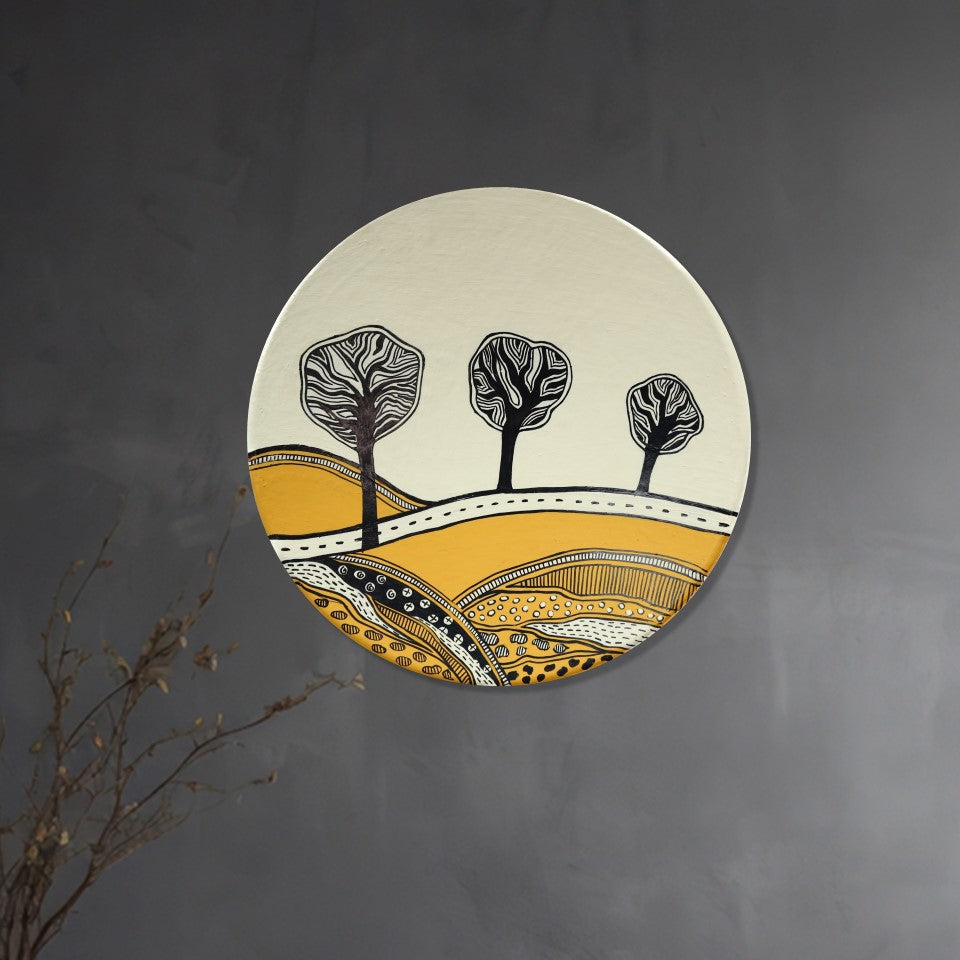Terracotta Art - Earth and Soul Pottery
Share
For decades, earthen pots have been an inevitable part of Indian homes; from cooking traditional chicken and mutton curries to using them as planters to sipping hot tea in kulhads. But have you ever wondered what this versatile material is called? You guessed it right. It is Terracotta.
Terracotta holds its roots from the Paleolithic Age, the first in the Three-age system. Archaeologists have also found several terracotta figurines from the enigmatic Indus Valley Civilization also. Do you know about ‘The Terracotta Army of China’?
Etymologically, terracotta is an Italian word which means “Baked Earth”. It is made from a fairly coarse and porous clay. The ball of clay is first shaped (or sculpted) on the rotating wheel of the potter, then fired in ovens until hard. In the ancient world, sunlight was used to harden these pots; now, they are baked in primitive ovens created in the ashes of open fires. Ultimately, they are fired (at about 1000°C) in special ovens, known as kilns. Once fired for approximately 2 hours, the clay assumes a brownish-orange color, ranging from an earthy ochre to red.
Baked terracotta is not watertight, for the clay used is porous, the layer of glaze is required to resist the seeping water. Hence, terracotta pots can be categorized into two categories, Glazed and Unglazed. Art too has significant science, right?
TERRACOTTA, HISTORY AND THE WORLD

Terracotta is omnipresent. One of the biggest reasons that terracotta is worldwide prevalent in history across so many eras is that it can be found anywhere and is known as being the most commonly found clay across every continent.
The Terracotta Army of China consisting of 8000 terracotta sculptures depicts the army of the first Chinese Emperor of the Qin Dynasty. These terracotta sculptures date back as early as 210 BCE. The mausoleum has been granted World Heritage Site by UNESCO.
Various terracotta figurines have been found in some of the earliest civilizations including Mesopotamian Civilization and Indus River Valley Civilization.
Venus of Dolni Vestonice is the oldest known art created using fired clay. It was discovered at a Stone Age settlement in the Czech Republic.
Due to its UV Resistant property, texture, malleability and abundant supply, terracotta continues to be a material of choice for many designers and architects. White glazed terracotta sheaths the exteriors of Railway Exchange Building in Chicago. The Victorian and Albert Museum is the finest example of terracotta architecture.
TERRACOTTA, MYTHOLOGY AND THE INDIAN STATES

Terracotta has been used in India for centuries. Traditionally, it is seen as a mystical
material due to its combination of four of the five vital elements – air, earth, fire, and water. Many Indian home decor items have terracotta as a base material. From Diwali oil lamps and deities’ idols to earthenware and animal figurines, terracotta has been an intrinsic part.
In Jammu and Kashmir, two types of terracotta art are there. One which has its inspiration from Bauddh Culture. Ladakh is the center for this sort of art and is meant mainly for monasteries. Another pottery art includes lamps, clay masks, beer pots, etc.
Tribal artisans have been making exquisite jewelry since the 4th Century on the land of Lord Jagannath, Odisha. Odia Cuisine is prepared on clay hearths called chulhas.
Himachal Pradesh, the home to scenic mountains also homes Red and Black pottery with linear and circular patterns.
The renowned Madhubani Painting originated from Bihar. Darbhanga district of Bihar also has flair of terracotta. Miniature painted pots, terracotta paintings, and other decorative items can be found in this region.

The arid region of Rajasthan is well known for the idols of Lord Bhairava and Nag Dev (the Serpent Lord). Rajasthani potters also use their wheel to prepare God’s idols, bells, and home decorative items.
In Gujarat, especially in Bhuj District, handpainted clay pots with geometric patterns are in rich trend.
Haryana has a tradition of making animal and bird figurines. Elephants and horses have been the central theme of pottery in the state. The reason may be the war of Mahabharat, the epic Hindu Legend which took place in the area of Kurukshetra.
The state of West Bengal can be a treasure trove when it comes to terracotta art. The art is heavily influenced by the Vaishnavite Movement. Other antique home decor items like dolls, wind chimes, toys are also baked here. Temples of Bishnupura are popular due to their exceptional terracotta carvings a`nd sculptures.
Terracotta Horses, which are considered to be the companion of Lord Aiyyanar, the god of Tamil Villages, can be found at the entrance of villages in Tamil Nadu.
From cladding huge buildings to decorating our homes with miniatures, from the earliest civilizations to this date, terracotta has always its hey-day. Terracotta sets trends, Tandoori Chai is one of them. Indian styled tea is first poured in a pre-heated kulhad due to which, the tea borrows an earthy-scent and heavenly taste. This earthy-scent is called Petrichor.
Enjoy this mitti-di-khushbu-wali-chai with kulhad chai set. In addition, you can explore and shop for our handpainted terracotta decorative vases.

